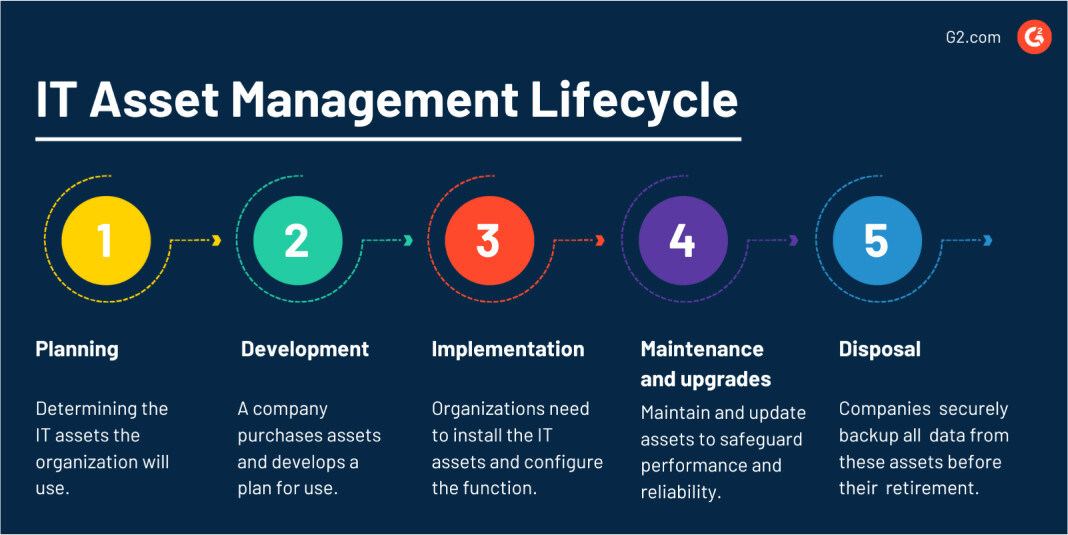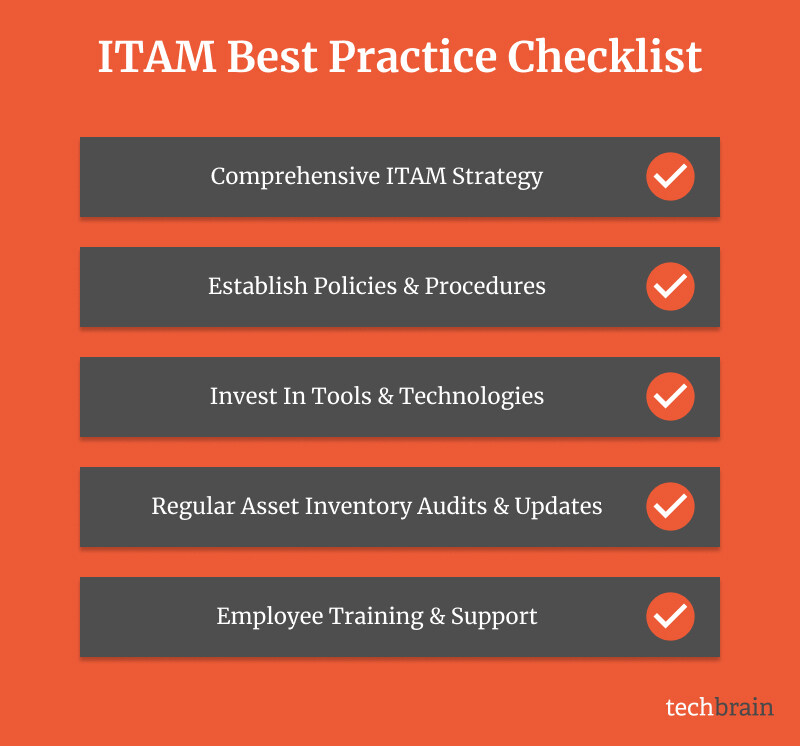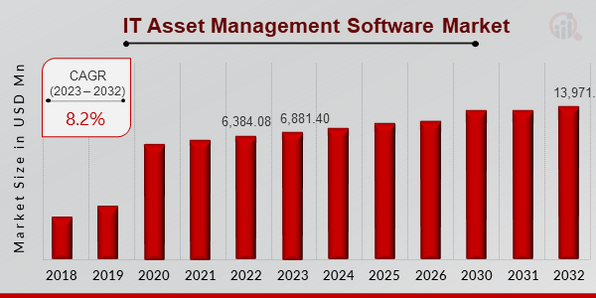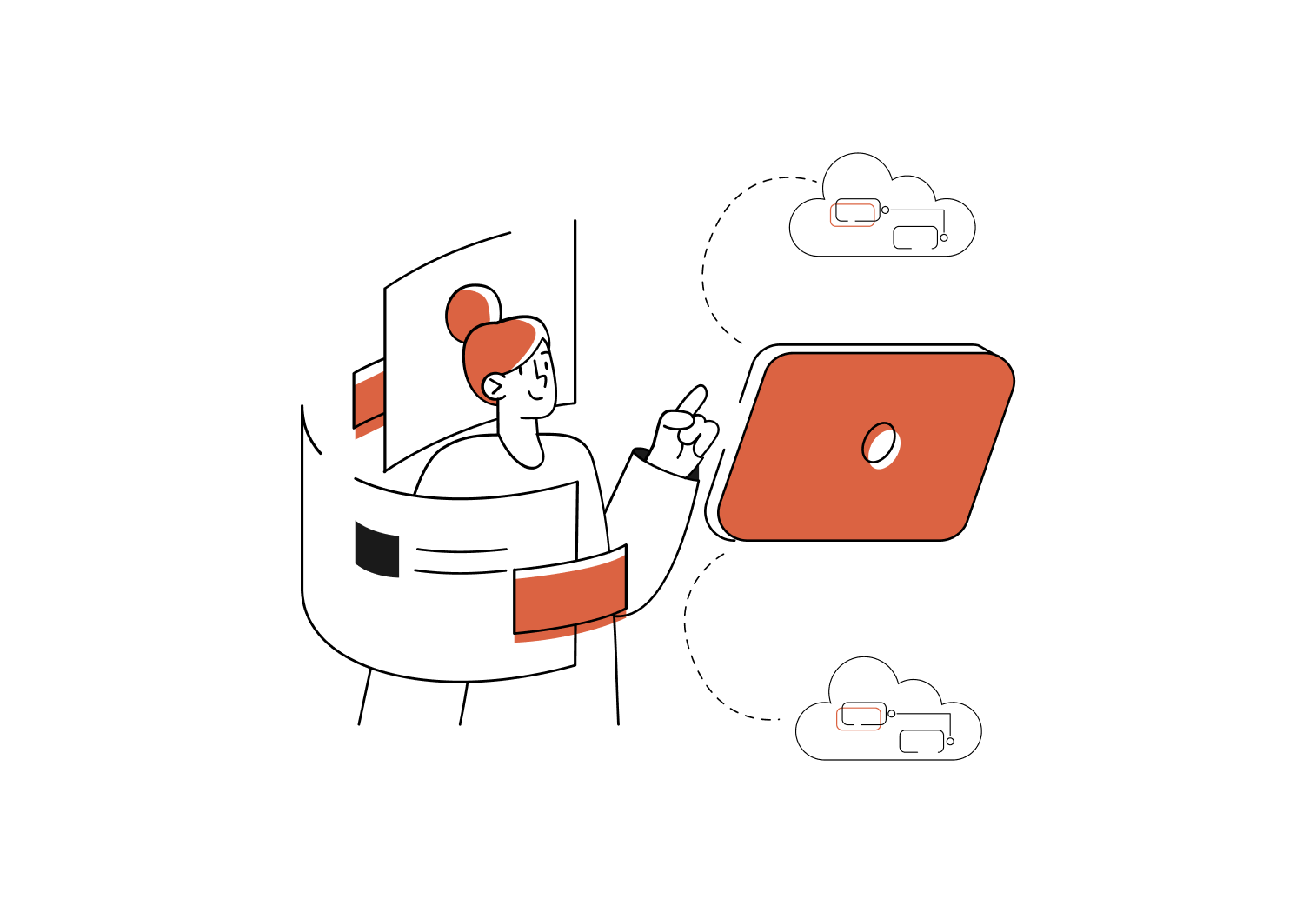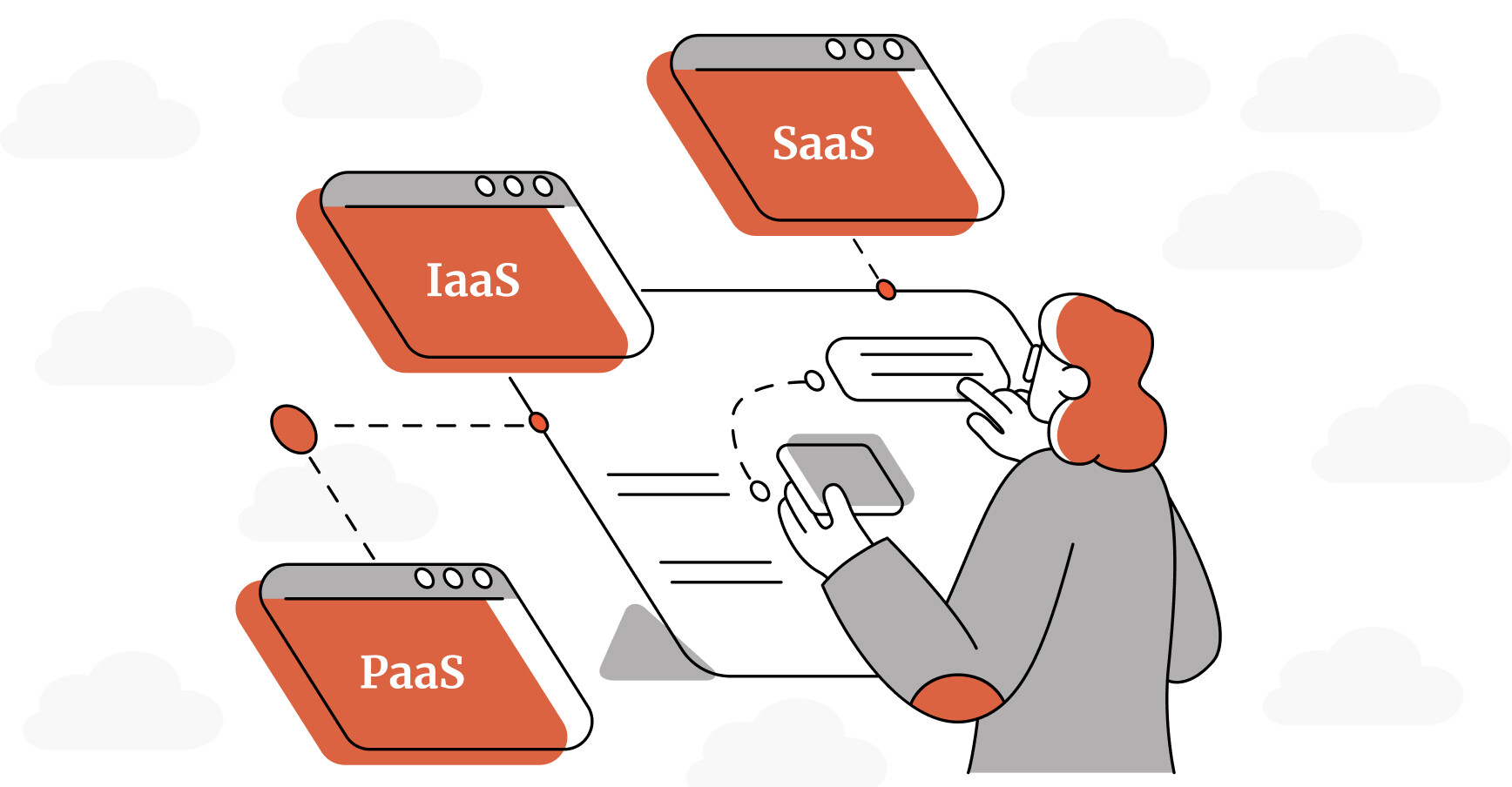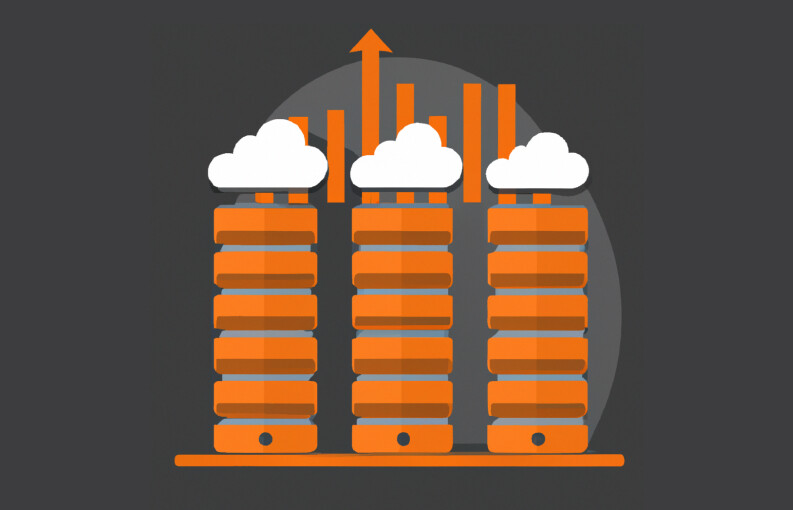In this article
In today’s fast-paced business environment, effective IT Asset Management (ITAM) has become a critical component of success for medium and large companies. IT managers understand the importance of driving innovation while keeping costs under control. ITAM software and strategy is a powerful toolset that can help you achieve these goals by optimising your IT infrastructure and streamlining processes.
However, implementing a comprehensive ITAM strategy can be challenging, particularly in today’s complex and evolving IT environments. Many businesses struggle with issues such as rising costs, difficulty tracking and managing assets across multiple locations and increased risk of non-compliance with software licensing agreements.
In this blog post we’ll explore the key components of ITAM, the benefits of implementing a robust ITAM strategy and best practices for overcoming common challenges. We’ll also take a look at some of the latest trends in ITAM and how they are likely to shape the future of the IT asset management process.
But let’s start from the foundation.
What is IT Asset Management (ITAM)?
IT Asset Management (ITAM) is a systematic approach to managing and optimising an organisation’s IT assets throughout their lifecycle. This includes hardware, software and digital assets such as licences and subscriptions.
At its core, ITAM is about gaining visibility and control over your IT assets. This means knowing what assets you have, where they are located, who is using them and how they are being used. With this information, IT Managers decide how to optimise organisational IT infrastructure, reduce costs and improve efficiency.
ITAM also plays a critical role in ensuring compliance with software licensing agreements and regulations. By tracking and managing your software licences and assets, you can ensure that you are using them in accordance with the terms of your licensing agreements and avoiding costly fines and legal action.
The Importance of ITAM
As your business grows, so does the complexity of your IT infrastructure. This can lead to a range of challenges:
- Rising costs associated with purchasing, maintaining and upgrading IT assets
- Difficulty tracking and managing assets across multiple locations and departments
- Increased risk of non-compliance with software licensing agreements
- Reduced efficiency due to outdated or underutilised assets
The projected increase in IT spending for 2024 forecasts a continued cycle of IT investment as businesses are compelled to invest in newer IT solutions to stay competitive. In essence, as Gartner summarises, spending will rise as long as there is a horizon for future competitive advantage, and for that, there is no visible end in sight.
So the question then also becomes: how can we maximise value out of IT investments? This is where ITAM comes into play. By implementing a robust ITAM strategy, businesses can optimise their IT spending, ensure compliance and improve overall efficiency and productivity.
Key Components of ITAM
However before we explore the solutions, to effectively manage your IT assets and realise the full benefits of ITAM, it’s essential to understand the key components that make up a comprehensive ITAM strategy. These components work together to provide a holistic approach to managing IT assets throughout their entire lifecycle, from procurement to asset retirement.
Hardware Asset Management
Hardware Asset Management involves tracking and managing physical IT assets such as computers, servers, and network devices.
Inventory Management:
Maintaining an accurate and up-to-date inventory of all hardware assets, including their location, status, and ownership.
Lifecycle Management
Managing assets throughout their lifecycle, from procurement to disposal, to ensure they are properly maintained and replaced when necessary.
Effective hardware asset management requires a combination of tools and processes. This may include using asset tracking software to maintain an accurate inventory, implementing regular maintenance and support processes to ensure assets are properly cared for and establishing policies and procedures for disposing of assets securely and in compliance with regulations.
Software Asset Management
Software Asset Management focuses on managing software licences and ensuring compliance with licensing agreements.
Licence Management
Tracking and managing software licences to ensure they are up-to-date and in compliance with vendor agreements.
Compliance Management
Regularly auditing software usage to identify any non-compliance issues and taking corrective action as needed.
Software asset and compliance management can be particularly challenging, as licensing agreements can be complex and vary widely depending on the vendor and product. It’s important to have a clear understanding of your licensing agreements and to regularly review your software usage to ensure compliance.
Mobile Asset Management
Mobile Asset Management involves managing mobile devices such as smartphones and tablets.
Device Management
Tracking and managing mobile devices to ensure they are properly configured, secured, and maintained.
Security Management
Implementing security measures such as device encryption and remote wipe capabilities to protect user access to sensitive data in case of loss or theft.
With the increasing use of mobile devices in the workplace, mobile asset management has become a critical component of ITAM. It’s important to have policies and procedures in place for managing mobile devices, including guidelines for acceptable use, security requirements and support processes.
Cloud Asset Management
Cloud Asset Management involves managing assets in cloud environments such as AWS, Azure and Google Cloud.
Cloud Inventory Management
Maintaining an accurate inventory of all cloud assets, including virtual machines, vendor data, storage and applications.
Cost Optimisation
Regularly monitoring and optimising cloud usage to ensure you are getting the most value for your investment.
Cloud asset management can be challenging, as the dynamic nature of cloud environments makes it difficult to maintain an accurate inventory and control costs. It’s important to have tools and processes in place for monitoring and optimising cloud usage, as well as policies and procedures for managing cloud assets throughout their lifecycle.
The Benefits of ITAM
As businesses grow, the complexity of their IT infrastructure increases, leading to various challenges such as rising costs, difficulty tracking assets, non-compliance risks and reduced efficiency. ITAM helps address these challenges by providing visibility and control over IT assets, enabling businesses to optimise their IT investments, mitigate risks and stay competitive.
Implementing a comprehensive ITAM strategy offers several key benefits:
- Cost optimisation: By providing a clear picture of IT assets and their usage, ITAM enables businesses to identify areas of overspending, eliminate unnecessary purchases, and negotiate better terms with vendors.
- Enhanced compliance: ITAM helps ensure compliance with software licensing agreements and industry regulations, reducing the risk of costly penalties and reputational damage.
- Improved security: With accurate asset inventory and regular vulnerability assessments, ITAM enables businesses to identify and mitigate potential security risks promptly.
- Informed decision-making: ITAM provides real-time, accurate data on IT assets, enabling businesses to make data-driven decisions about technology investments, resource allocation, and strategic planning.
- Increased efficiency and productivity: By ensuring that IT assets are properly maintained, configured, and utilised, ITAM helps minimise downtime, streamline processes, and enhance overall operational efficienc
Challenges and Best Practices in Implementing ITAM
Implementing a comprehensive ITAM strategy can be challenging due to factors such as complex and evolving IT environments, lack of standardisation and integration among various tools, ensuring compliance with Australian laws and regulations and managing assets across multiple locations and remote workforces.
To overcome these challenges and realise the full benefits of ITAM, businesses must adopt best practices:
- Developing a comprehensive ITAM strategy
- Establishing policies and procedures for asset lifecycle management
- Investing in the right ITAM tools and technologies
- Regularly auditing and updating asset inventory
- Providing training and support for employees
Effective policies and procedures should cover the entire asset lifecycle, from procurement to disposal, ensuring compliance with licensing agreements and regulations. This includes having clear guidelines for asset acquisition, configuration, asset repair / maintenance, and retirement, as well as procedures for handling security and compliance issues.
Investing in the right tools and technologies is also critical for successful ITAM implementation. This may include asset discovery and inventory management tools, software licence management solutions, mobile device management platforms, and cloud asset management tools. When selecting tools, businesses should consider factors such as ease of use, integration with existing systems, scalability, and alignment with their specific needs and budget.
Regular audits and updates of the asset and software inventory are essential for maintaining accurate and up-to-date information. This involves conducting physical inventories, performing software audits, and reviewing asset data to identify discrepancies or inaccuracies. By keeping their asset inventory current, businesses can make informed decisions and avoid compliance and security risks.
Finally, providing comprehensive training and support for employees is crucial for ensuring the successful adoption and ongoing effectiveness of ITAM practices. This includes educating staff on ITAM policies, procedures, and best practices, as well as providing resources and assistance for managing and using IT assets efficiently and securely.
Future Trends in ITAM
The field of IT Asset Management is constantly evolving, driven by advancements in technology and shifting business priorities. As we look towards the future, several key trends are emerging that will shape the way organisations approach ITAM in the coming years.
These trends, backed by industry research and expert insights, point towards a more integrated, automated and service-oriented future for ITAM.
The Rise of Asset-as-a-Service (AaaS)
Asset-as-a-Service (AaaS) is a new model for managing IT assets in which businesses pay for assets on a subscription basis rather than purchasing them outright. A study by IDC predicted that “by 2024, 50% of enterprise IT assets will be consumed as a service” indicating a major shift in how organisations procure and manage their IT assets.This model offers several benefits.
Reduced upfront costs: With AaaS, businesses can avoid the large upfront costs associated with purchasing IT assets outright. Instead, they pay a predictable monthly or annual fee for access to the assets they need.
Increased flexibility and scalability: AaaS allows businesses to quickly scale their IT infrastructure up or down as needed, without the need to purchase and manage additional hardware or software.
Improved access to the latest technologies: With AaaS, businesses can access the latest technologies without the need to constantly upgrade their own hardware and software. This can help businesses stay competitive and take advantage of new innovations as they become available.
As AaaS becomes more common, ITAM strategies will need to evolve to accommodate this new model. This may include new tools and processes for managing assets in a subscription-based model, as well as new skills and expertise for IT teams.
Integration of ITAM with Other IT Management Practices
ITAM is becoming increasingly integrated with other IT management practices such as IT Service Management (ITSM) and IT Operations Management (ITOM). This integration allows for a more holistic approach to managing IT assets and services.
By integrating ITAM with ITSM businesses can ensure that their IT assets are properly configured and maintained to support the delivery of IT services. This can help improve the quality and reliability of IT services, as well as reduce the risk of service disruptions due to asset failures or misconfigurations.
Similarly, by integrating ITAM with ITOM, businesses can gain greater visibility and control over their IT infrastructure, including both on-premises and cloud-based assets. This can help businesses optimise their IT operations, reduce costs, and improve overall performance and reliability.
Use of AI and Machine Learning for Asset Discovery & Optimisation
Artificial Intelligence (AI) and Machine Learning (ML) are transforming the IT Asset Management (ITAM) landscape, offering new ways to automate and optimise various processes. These technologies are being applied to three key areas of ITAM: automated asset discovery and inventory management, predictive maintenance and support and optimisation of software licences and cloud computing resources.
AI and ML can automatically discover and inventory assets across an organisation’s network, reducing manual effort and improving data accuracy. This enables businesses to have a more comprehensive and up-to-date view of their IT assets, facilitating better decision-making, risk management and resource allocation.
By analysing asset data, AI and ML can predict when assets are likely to fail or require maintenance, allowing IT teams to take proactive measures to address potential issues before they lead to downtime or disruptions. This ultimately improves the reliability and performance of IT services.
AI algorithms can analyse software usage data to identify unused or underutilised licences, providing opportunities for businesses to optimise their software spend and ensure compliance with licensing agreements. ML can also recommend changes to cloud resource allocation based on usage patterns and performance data, enabling organisations to make the most efficient use of their cloud investments.
The adoption of AI and ML in ITAM is expected to grow significantly in the coming years. According to a report by Research and Markets, the global IT Asset Management (ITAM) market is expected to reach USD 13.97 billion by 2032, growing at a CAGR of 8.2% during the forecast period (2023 – 2032). The report also highlights the increasing adoption of AI and ML technologies in ITAM as a key factor driving market growth (Research and Markets, 2021).
As these technologies continue to advance and mature, they will play an increasingly crucial role in helping businesses streamline their asset management processes, make data-driven decisions and adapt to the ever-evolving IT landscape.
Harnessing the Potential of ITAM for Business Growth
Effective IT Asset Management (ITAM) has never been a more critical driver of success for large-scale Australian businesses. As organisations grapple with the growing complexity and scale of their IT infrastructures, implementing a comprehensive ITAM strategy is no longer a luxury but a necessity.
However, the path to successful ITAM implementation is not without its challenges. Organisations must navigate a myriad of obstacles, from complex and evolving IT environments to the need for integration across disparate systems and the ever-present threat of non-compliance with industry regulations.
To overcome these hurdles, businesses must develop a clear and comprehensive ITAM strategy that aligns with their overall objectives, establish robust policies and procedures for asset lifecycle management and provide ongoing training and support for their employees.
Ultimately, the key to unlocking the full potential of ITAM often lies in partnering with a trusted and experienced IT service provider. With their deep expertise in IT asset lifecycle management and cutting-edge tools, providers like TechBrain can help businesses navigate the complexities of ITAM, develop tailored strategies that meet their unique needs, and drive meaningful results.
By leveraging the potential of effective ITAM, organisations can not only streamline their operations and reduce costs but also gain a vital competitive edge in an increasingly crowded and fast-paced market.

